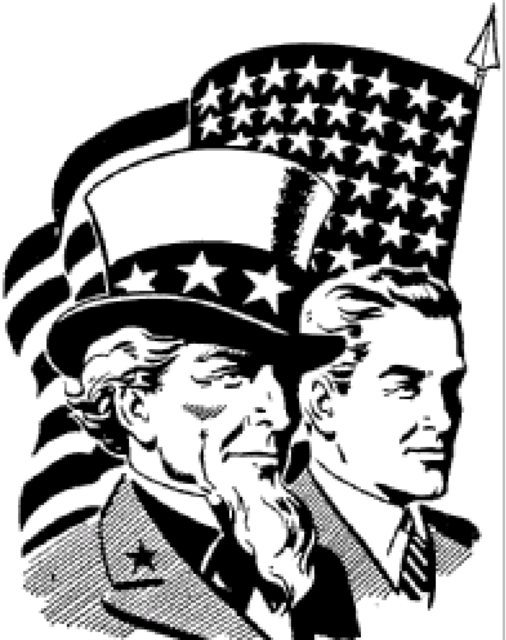135th Anniversary of the Federal Civil Service
On January 16, 1883, Congress passed “An act to regulate and improve the civil service of the United States.” While the Civil Service Commission (CSC) no longer exists, the CSC was the start of the modern federal employment system for the federal government.
Why Was the CSC Created?
The Civil Service Commission was created in an attempt to create a workforce of qualified people to do the work of the federal government. Using a competitive examination as a way to select the best qualified people for federal jobs was a significant move away from filling jobs based on political affiliation.
The 1883 law also made it illegal to fire or demote federal officials for political reasons and prohibited soliciting campaign donations on federal property.
In effect, the law was an attempt to end what was known as the “spoils system.” Under this system, which reached its peak under President Andrew Jackson, the philosophy was “to the victor belong the spoils.” That meant, in effect, the party that won the election got to appoint federal employees. The system was also known as “political patronage.”
Assassination of President James Garfield
The shooting of President Garfield in 1881 was influential in creating an impetus behind the 1883 civil service law.
President Garfield was shot by Charles Guiteau. Guiteau was a lawyer who thought the new president owed him a federal job for his “vital assistance” in helping Garfield win the election in 1880. Garfield died two months after he was shot. Vice President Chester A. Arthur became president and, after he became president, President Arthur supported the legislation for civil reform.
Beginning of Collective Bargaining
NFFE, National Federation of Federal Employees, an independent association representing the federal workforce was established in 1917.
Significant Changes to the Civil Service System
There have been significant changes in the federal civil service system. Competitive examinations were largely discarded in the 1980’s after a series of lawsuits contending the examinations were unfair to minority job applicants who often had lower test scores on the examinations.
Some federal jobs now require a written exam but there is not a single civil service “test” covering all federal positions. Many federal jobs no longer require a traditional test. The vacancy announcements on the USAJOBS website indicate if a specific written test is necessary.
In 2015, the government brought back the use of a civil service exam for use in some agencies. The new tests use avatars and videos to try and simulate challenges that could confront employees. The exams are also intended to test an applicant’s reasoning and problem-solving skills. A correct answer leads to a harder question and a wrong answer leads to an easier question or option.
Civil Service Reform Act of 1978 and Collective Bargaining
The Civil Service Reform Act (CSRA) was passed under the Carter administration. The rationale for the new law was, in part, based on a conviction that too many federal employees could not be fired even if they were incompetent or had engaged in misconduct. The previously existing disciplinary system was considered too complex and outdated. There was also a common belief that the federal government was not efficient and there was not sufficient political control over the federal bureaucracy by the president.
The CSRA was intended to create a more efficient system and more responsive civil service system. It emphasized performance standards to be used for rewarding and retaining employees and created a Senior Executive Service with an ability of agencies to move senior people into positions and locations where they were needed the most. In part, the new law was also designed to try to eliminate manipulation of the older civil service system.
The CSRA also recognized collective bargaining, and created new protection for employees disclosing illegal or improper government conduct.
The CSRA abolished the Civil Service Commission and, instead, created the Office of Personnel Management (OPM). It also created new agencies including the Merit Systems Protection Board, the Federal Labor Relations Authority and the Office of Special Counsel. Some functions of the former CSC were also assigned to other agencies.
Future of the Civil Service
As the federal civil service has changed, there are still calls in Congress and elsewhere for more changes to be made to create a better civil service system. The pay and classification structure used by the federal government has become splintered and often considered outdated. There are periodic attempts to change these systems. No doubt, changes will occur in these areas in the future.
Many agencies now pay higher salaries than other agencies. There have already been some attempts to remedy the discrepancies in some agencies, and further changes are likely to be implemented.
The federal bureaucracy is slow and resistant to change. Making changes in Congress is also very difficult and time-consuming. But, despite resistance and obstacles, changes do occur in federal employment.
The current system, with significant change, has lasted for at least 135 years.
a campaign for Congress to
support civil service
NFFE
National Federation of
Federal Employees
Chicago, IL
We Work for America
Everyday
"the right of Federal employees to organize, bargain collectively, and participate through labor organizations in decisions which affect them, with full regard for the public interest and the effective conduct of public business, should be specifically recognized in statute."
